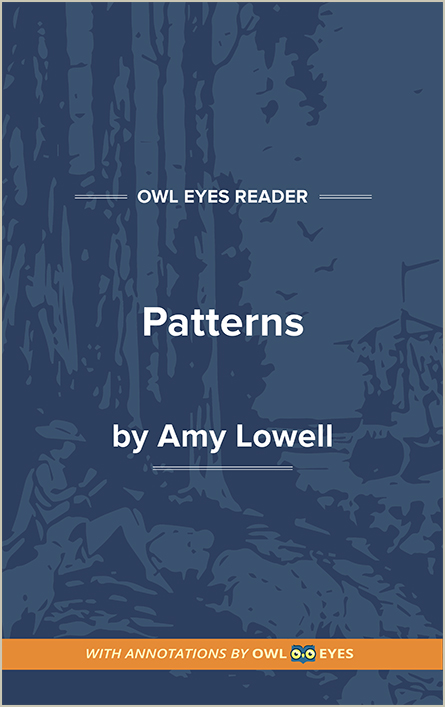Analysis Pages
Themes in Patterns
Themes Examples in Patterns :
Patterns
🔒"What are patterns for?..." See in text (Patterns)
"In a pattern called a war...." See in text (Patterns)
"Flanders..." See in text (Patterns)
"he would have been my husband..." See in text (Patterns)
"blue and yellow flowers..." See in text (Patterns)
"correct..." See in text (Patterns)
"“See that the messenger takes some refreshment...." See in text (Patterns)
"maze..." See in text (Patterns)
"I would choose..." See in text (Patterns)
"dear..." See in text (Patterns)
"my bosom..." See in text (Patterns)
"softness of a woman..." See in text (Patterns)
"softness..." See in text (Patterns)
"Makes a pink and silver stain..." See in text (Patterns)
"Wars against..." See in text (Patterns)
"I too am a rare Pattern...." See in text (Patterns)
"softness..." See in text (Patterns)
"the patterned garden paths..." See in text (Patterns)
"a plate of current fashion..." See in text (Patterns)

